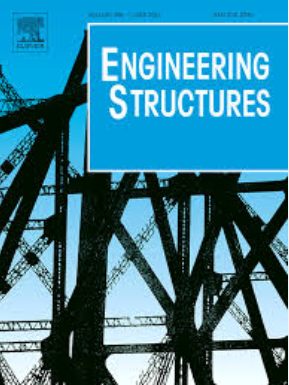Design of partially grouted reinforced masonry shear walls in an earthquake-prone area: Proposal based on the LRFD approach
IF 5.6
1区 工程技术
Q1 ENGINEERING, CIVIL
引用次数: 0
Abstract
There is a lack of reliability assessment of modern structural masonry design. Hence, a novel reliability-based calibration of the in-plane shear ultimate limit state for partially grouted reinforced masonry shear walls (PGRMSWs) is presented. This calibration allows for the proposal of a load and resistance factor design (LRFD) methodology oriented to in-plane shear design, responding to the need to update the reinforced masonry Chilean code, which is currently based on the allowable stress design (ASD) format. An extensive database of material and assembly tests and numerical research that made this code update proposal feasible are summarized. The reliability-based calibration was performed aiming to define a target reliability index (βT) and the corresponding strength reduction factors (φ) were recommended. A value of βT = 2.5 is defined based on the reliability analysis of representative existing structures against earthquake-induced shear force. The results allow for recommending φ = 0.60 for walls made of multi-perforated clay bricks and φ = 0.70 for walls made of hollow concrete blocks. Additionally, φ = 0.85 and φ = 0.65 are recommended for flexural and axial strength of compression-controlled walls by adapting international standards to Chilean practice. Comparisons of the required horizontal reinforcement between ASD and LRFD methodologies are presented for a 4-story case study building. The results show that the total reinforcement quantities from ASD and LRFD methodologies are similar, which means the proposal does not imply a more restrictive and expensive design; yet, the LRFD proposal provides designs with a uniform reliability level across various load scenarios.
求助全文
约1分钟内获得全文
求助全文
来源期刊

Engineering Structures
工程技术-工程:土木
CiteScore
10.20
自引率
14.50%
发文量
1385
审稿时长
67 days
期刊介绍:
Engineering Structures provides a forum for a broad blend of scientific and technical papers to reflect the evolving needs of the structural engineering and structural mechanics communities. Particularly welcome are contributions dealing with applications of structural engineering and mechanics principles in all areas of technology. The journal aspires to a broad and integrated coverage of the effects of dynamic loadings and of the modelling techniques whereby the structural response to these loadings may be computed.
The scope of Engineering Structures encompasses, but is not restricted to, the following areas: infrastructure engineering; earthquake engineering; structure-fluid-soil interaction; wind engineering; fire engineering; blast engineering; structural reliability/stability; life assessment/integrity; structural health monitoring; multi-hazard engineering; structural dynamics; optimization; expert systems; experimental modelling; performance-based design; multiscale analysis; value engineering.
Topics of interest include: tall buildings; innovative structures; environmentally responsive structures; bridges; stadiums; commercial and public buildings; transmission towers; television and telecommunication masts; foldable structures; cooling towers; plates and shells; suspension structures; protective structures; smart structures; nuclear reactors; dams; pressure vessels; pipelines; tunnels.
Engineering Structures also publishes review articles, short communications and discussions, book reviews, and a diary on international events related to any aspect of structural engineering.
 求助内容:
求助内容: 应助结果提醒方式:
应助结果提醒方式:


